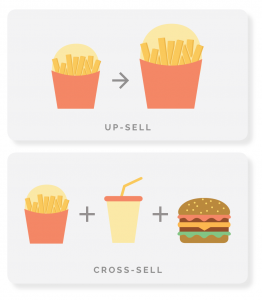A Salesforce VP shares his insights into how valuable it is when sales and marketing teams align to work toward common goals.
In 1998, my software developer brother said: “you’ve gotta get into software – the internet is changing everything!” Fast forward to 1999, after passing a couple of interviews and slogging through some C++ books, I packed up my life, took a 50 percent pay cut, and headed to Denver to work as an inside sales rep for my first job in the software industry.
Today, exactly 20 years later, I lead a product marketing team at Salesforce. How did I get here? In summary: I spent 10 years in sales. Then, in August 2009, I walked into our HQ in San Francisco for my first day as a marketer and I have been in marketing ever since.
After 10 years in sales and 10 years in marketing, here are the 10 biggest lessons my career has taught me:
1. The best marketers never stop listening to customers.
In my experience, the best marketers I know are the ones who are always listening to customers. They’re passionate about delivering innovative and personalized experiences to their audience in the language of their customers. This is marketing at its best: simple and approachable messaging that your buyer understands.
2. The best salespeople never compete.
The biggest difference between the best salespeople and everyone else is how they handle competitive opportunities. I once interviewed 17 salespeople who had gone to 100 percent club three years in a row. My hypothesis was: if you went to club three years in a row, you weren’t just good — you were the best. We wanted to learn what they were doing that was so different, and use that in our marketing. One of the questions asked was “When you’re in a competitive deal, how do you deal with that? What is your approach?”
The best salespeople never got into a “feature comparison.” They focused on the customer, spent time listening and deeply understood the customer’s business. If you’re pulling up your feature comparison doc thinking you’re going to win a deal, you’ve already lost, according to these best-in-class sellers.
3. What sales wants, marketing wants, too.
Both sales and marketing teams want the same things. They just have different ways of saying it. Sales talks about opportunities and pipeline. Marketing talks about leads and the funnel. At their core, those things are the same. My advice to marketers: learn the ‘love language’ of sales.
4. Never underestimate the power of a customer story.
Marketers. Salespeople. Customers. Prospects. At the end of the day, we’re all human — and there’s nothing more human than a story. A customer story shares a real-life experience that someone has had with your brand. It makes people who aren’t yet customers say: “hey – I can see myself in that story. We can do that too!”
5. Everything is about budget and resources.
Marketing effectively comes down to money and resources. You can’t support events, demand gen, website design and everything else marketers do without budget and people.
Sellers reading this, understand that marketing can’t do their jobs without money and people, and have empathy for it. When I was a seller and marketing told me “we don’t have the budget” it always made me grumpy. I later learned how much that was not their fault, and that I could have done more to help.
6. Marketers should think about products the way salespeople do.
In my experience, most marketers are not nearly as well-versed in the products as they are in marketing. What I learned in sales was that the best salespeople understood what they were selling. Deeply. When I first started in marketing, I took this seriously and was a better marketer for knowing our products as well as anyone in sales.
7. Salespeople should understand different marketing roles.
We have brand marketing, public relations, demand generation, product marketing, marketing operations, and more. Each of these marketing functions is it’s own specialization and often takes years to become an expert in. The best salespeople understand how to work with each marketing function and take advantage of the skills and different capabilities when needed.
8. Marketers should spend a day in salespeople’s shoes.
Cold calling leads, meeting prospective customers at events – it is hard. Every salesperson you meet is under a lot of pressure to meet their quota and close deals.
Marketers, recognize whatever you’re working on is probably not as important to sales as the deal they are working hard to close – give them space. Spend a day shadowing a salesperson on your team. You’ll have an entirely new perspective for how hard their job is, and you may come away with a few things you can do as a marketer to help them.
9. Salespeople should spend a day in marketers’ shoes.
When I was in sales I thought marketing was for people who couldn’t sell. Nothing could be further from the truth. Creating content, managing customer relationships, building campaigns, measuring leads and pipe-gen – all of this can be taxing. And extraordinary marketing is more science than art, with persona research, market research, audience segmentation and more.
The best salespeople understand that marketing is working hard on sales’ behalf. If you’re in sales, get to know your marketing peers. Remember whatever you can do to support them will ultimately be supporting you too.
10. Great marketing can set the pace for a whole company – but you need great sales, too.
An entire company can rally around a catchy tagline, fun mascots, or a cool ‘out-of-home’ campaign. A well-planned marketing program can create momentum that sales can benefit from for years to come. But without a sales team to work the leads that result from the increased demand – what good was the campaign? Recognize that to win, you need both teams operating as one.
Which path should you take – marketing or sales?
In my 20-year career in marketing and sales, I’ve learned that both teams work best when they’re aligned. At the end of the day, we’re all working toward common goals. Here’s to the future – a future where marketing and sales understand each other better than ever!
Opinions expressed in this article are those of the guest author and not necessarily Marketing Land. Staff authors are listed here.
(62)
Report Post






